Fujifilm FinePix S3 Pro camera shown in this review and lens Nikon 50mm 1: 1.8D AF Nikkor (MKIII) Radozhiva was presented by Sergey Gordubey. From Evenkia (north of the Krasnoyarsk Territory) the parcel with the equipment went for more than a month. I express my deep gratitude to Sergey for such project assistance. Camera and lens were sold and funds credited here.
Fujifilm FinePix S3 Pro is legendary digital SLR camera, which was introduced back in 2004, but is still appreciated by many photographers to this day. The main strength of the camera is a special matrix - Fujifilm SuperCCD SR II, consisting of two types of photodiodes arranged in a special way and allowing to achieve a large dynamic range and excellent color reproduction. The very name of the matrix 'Fujifilm SuperCCD SR'already hints at dynamic range, where' SR 'is'Super dynamic Range '-' Super Dynamic Range '. How the SuperCCD SR matrix is arranged and functions can be viewed here.
Fujifilm SuperCCD technology was introduced in 1999 and has three generations: SuperCCD I, II, III. In 2003, with the release of the fourth generation of sensors, the technology branched out into SuperCCD HR (high resolution) and SuperCCD SR (high dynamic range). SuperCCD HR technology has survived to its eighth generation (counting from the beginning), while SuperCCD SR has only been updated to SuperCCD SR II once. In 2008 SuperCCD HR and SuperCCD SR technologies were merged and upgraded to SuperCCD EXR. In 2011, Fujifilm ditched the SuperCCD EXR with its special shape and sub-pixel arrangement. CMOS technology, with its conventional Bayer pattern, won, but the experiments did not end there - Fujifilm can still surprise with something unusual in our time :).
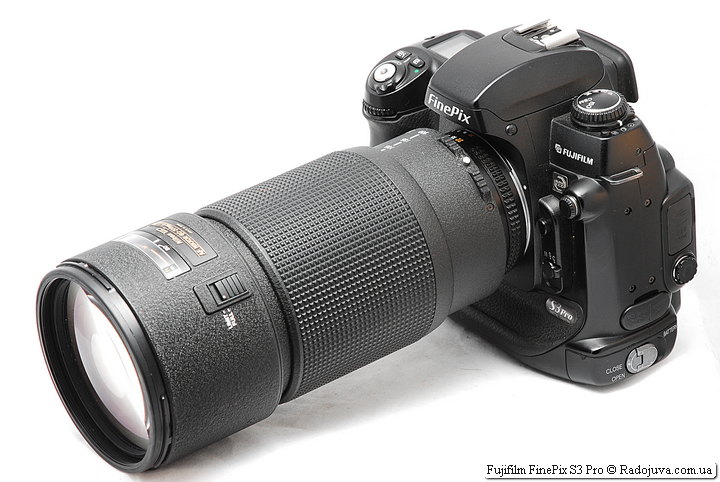
Fujifilm FinePix S3 Pro with lens Nikon ED AF Nikkor 80-200mm 1: 2.8D (MKII)
Below is the evolution of the Fujifilm FinePix CZK:
- Fujifilm FinePix S1 Pro - January 2000, based on the film Nikon F60 (aka Nikon N60), the first generation SuperCCD. Matrices for the Fujifilm FinePix 4700 Zoom and 4900 Zoom compacts were manufactured using the same technology.
- Fujifilm FinePix S2 Pro - January 2002, based on the film Nikon F80 (aka Nikon N80), SuperCCD III (the matrix third generation) Fujifilm F601 Zoom, S602 Zoom, and M603 compact matrices were manufactured using the same technology.
- Fujifilm FinePix S3 Pro - February 2004, based Fujifilm FinePix S2 ProSuperCCD SR II matrix (second generation SR matrix)
- Fujifilm FinePix S3 Pro UVIR - August 2006, upgraded Fujifilm FinePix S3 Pro for shooting in IR (Infra Red) and UV (Ultra Violet) spectra.
- Fujifilm FinePix S5 Pro - September 2006, based Nikon D200, a slightly upgraded SuperCCD SR II matrix (similar to the one installed on the Fujifilm FinePix S3 Pro).
- Fujifilm FinePix IS Pro - June 2007, Revamped Fujifilm FinePix S5 Pro for shooting in IR (Infra Red) and UV (Ultra Violet) spectra.
Yes, that's right, there is no intermediate model between S3 Pro and S5 Pro because in the east they do not like the number 4. All Fujifilm FinePix SLR cameras have an APS-C type sensor with crop factor 1.5 X, and are analogues of cameras Nikon DX.
Fujifilm FinePix SLR cameras have omitted the use of first-generation SuperCCD SR arrays, which were used by the Fujifilm F700, F710 and S20 Pro compacts. And also missed the second generation SuperCCD, which were the Fujifilm Finepix 6800 Zoom and 6900 Zoom.
All Fujifilm FinePix SLR cameras were built on the basis of Nikon DSLRs, both film and digital, and therefore have a Nikon F mount and are compatible with Nikon lenses and other add-ons (flashes, remote controls, boxes, etc.).
Until the first digital SLR camera Fujifilm FinePix S1 Pro Nikon and Fujifilm also collaborated and produced quasi full-format digital SLR cameras Nikon E / Fujifilm Fujix DS.
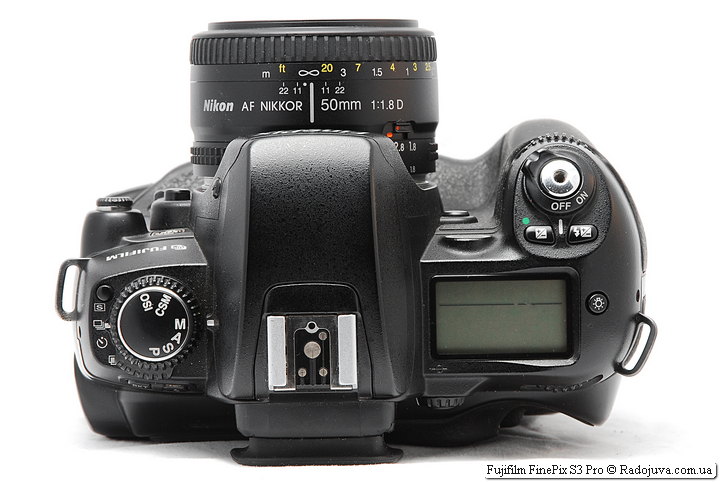
Fujifilm FinePix S3 Pro with lens Nikon 50mm 1: 1.8D AF Nikkor (MKIII)
Chassis S2 Pro and S3 Pro (from this review) is built on the basis of the Nikon F80 film SLR camera (for America it was produced under a different name - Nikon N80). A camera is built on the basis of the same camera. Nikon D100... In my opinion, due to the unfortunate main command dial with which ISO is selected and custom CSM functions, all of these three cameras are - S2 Pro, S3 Pro and D100 they have the worst control of all the digital cameras with Nikon mount I have ever used.
S3 Pro, like Nikon D100 and S2 Pro, uses a focus system Multi-cam 900 by 5 focus points, the center point is cruciform. Responsible for exposure 10-segment SPD sensor... The ISO range is small - from 100 to 1600 units, you can select ISO values 100, 160, 200, 400, 800, 1600. Functions Auto ISO not on the camera. Minimum excerpt shutter - 1/4000 s, and excerpt sync with flash is 1/180 s. The camera is designed to use old flashes that work in automatic D-TTL mode. Modern flashes will not work with S3 Pro in TTL or I-TTL mode. And it’s also very inconvenient that the value excerpts and apertures are changed only by half-stops (step 0.5 EV).
Too bad Fujifilm FinePix S3 Pro does not support auto metering exposure with lenses without CPU contacts (i.e. manual).
The S3 Pro uses a small two-inch display and 235.000 dots. The display, by modern standards, is very weak and is more suitable for setting menu options. There are two additional monochrome displays for quick setup of some parameters.
Depending on the selected dynamic range mode, the S3 Pro can either shoot at 2.5 fps or around 1.5 (RAW), 1.1 (JPEG FINE), 1.0 (JPEG NORMAL) fps. The following is placed in the camera buffer:
- 12 frames in JPEG mode 12 MP Fine in standard dynamic range mode
- 7 frames in RAW mode in standard dynamic range mode
- 9-10 frames in JPEG 12 MP Fine mode in high dynamic range mode
- 3 frames RAW HDR
It's important: Memory card writing speed CF is about 2 MB/second, and recording one photo in RAW WIDE quality is about 12 seconds. This applies even to very fast memory cards.
It's important: memory cards CF those larger than 4 GB take a very long time to format and initialize with the camera. Optimal use of cards CF 4 GB or less (recommended by the instructions). In this case, memory cards of 8, 16, 32 GB can use the entire memory capacity, but there may be a very long delay after turning on the camera, which is spent on initializing the memory card (can be minutes).
It's important: The camera is best used with 'H' type XD memory cards. Such cards are only available in 512 MB, 1 GB, 2 GB (very rare). Marking 'H' indicates a high data write speed. With these memory cards, recording a single picture in RAW WIDE quality is about 5 seconds, and the recording speed is about 5 MB/s. At the same time, in the official characteristics of such cards, it indicates that the maximum write speed should be at the level of 4 MB / second. Slower XD cards like 'M' and 'M+' are slightly slower.
It's important: This camera does not work with Micro adapter SD -> XD.
VERY IMPORTANT: The image review functions Menu->IMAGE DISP.->ON and Menu->IMAGE DISP.->PREVIEW greatly reduce frame buffer and significantly slow down the recording of pictures on the memory card. It is recommended to use the Menu->IMAGE DISP.->OFF function.
It's important: when frame buffer completely filled and the camera cannot take the next shot, on the secondary monochrome display (above the main color display), the remaining frame counter changes its background to a dark background. As soon as the background becomes light again, you can take at least one more photo. This makes it easy to know when you can continue shooting, which is very important when shooting with 'WIDE' dynamic range in 'RAW' format (when the files weigh 25 MB, and wait for one frame to be recorded on the cards CF account for 12 seconds).
It's important: Frame buffer data is written faster when shooting is stopped. If shooting continues, each individual picture will take significantly longer to be recorded to the memory card. Most likely, the recording of already received frames from the frame buffer to the memory card slows down due to the distribution of processor power for processing each new frame.
I want to clarify that RAW files (.'RAF') use 14-bit color depth and recorded without compression (i.e. no data loss due to compression). RAW files are 25MB in 'WIDE' wide dynamic range mode and 12MB in standard dynamic range mode (only S-pixels are encoded). The camera takes pictures with a maximum size of 4256 X 2848 pixels (12.1 megapixels).
The S3 Pro has a Live View mode. Fujifilm is 3 years ahead of Nikon in Live View. The first cameras with Live View were Nikon D3 и D300presented simultaneously in August 2007. Fujifilm overtook Canon, which 40D and 1D Mark III with Live View function was presented in the same summer of 2007 (Canon EOS 20Da is not taken into account, because it is intended for specific work). True, the S3 Pro's Live View is a bit stripped down:
- Runs a maximum of 30 seconds. The timer with the remaining time is displayed.
- The picture is displayed only in black and white.
- Only manual focus is available.
- There is no quick button to enable Live View.
- While Live View is on, you cannot shoot. To release the shutter, you must exit the Live View mode.
- An increase in the central region of the image is available, but only twice.
- The 'Live View' in the camera is called 'Live Image'.
- There is no way to change the exposure value, only increase or decrease the brightness of the image displayed on the display is available.
- When Live View is turned on, the batteries run out quickly.
In general, such a Live View can be useful only in rare cases :)
Fujifilm FinePix S3 Pro and Fujifilm FinePix S5 Pro are two truly legendary DSLR cameras. Despite the fact that they have completely different body and controls, the quality of images from both cameras is very similar. Fujifilm claims that the S5 Pro uses a modified Fujifilm SuperCCD SR II sensor, but if you dig around the global web, you can say with certainty that the S5 Pro has only changed the low-pass filter, which is designed to combat moiré. In general, the thinner filter on the S3 Pro can make it easier to achieve sharper images than on the S5 Pro. Actually, because of this, many users like the image quality from ProTroyka more than from ProTroyka. On the other hand, there are a lot of opinions that the S5 Pro has a slightly nicer color, and a little less noise, since the S5 Pro, in addition to the updated low-pass filter, has also updated the signal processing hardware, which allowed expanding the ISO range by one notch. Personally, I would prefer to use the newer - S5 Pro.
The S5 Pro and S3 Pro are not the cameras that should be bought for high ISO settings - they are primarily interesting for their dynamic range and color reproduction, which are revealed in full force only at low ISO values. I am sure there will be many people in the comments to this review who would argue that the S3 Pro's high ISO noise pattern is very similar to film grain.
Below is a diagram with the evolution of Super CCD matrices:
Some useful observations on the S3 Pro:
- The camera loves well-charged batteries and rechargeable batteries and discharges them very quickly. Perhaps the charge level controller on the camera, which I visited in review, is old and does not quite correctly determine the charge.
- S3 Pro does not have a Russian-language menu.
- The camera uses a large full-frame mirror, which it inherited from S2 Proand the one from Nikon F80 (N80). The shutter sound is quite quiet and pleasant.
- The combo body is an indispensable thing when shooting in a vertical (portrait) position. Models S1 Pro and S2 Pro lack a duplicate shutter button in portrait position.
- The joystick does not have a central button.
- On the body of the S3 Pro are: USB 2.0, IEEE 1394 (Firewire), video output, DC-IN external power connector (for connecting AC-5VX AC adapter), remote control connector, PC Sync connector for studio flashes and a hole on the button shutter release for the old style shutter cable.
- I would like to have a more accurate automatic white balance, sometimes the camera 'guesses' it not quite right. This is a major flaw that has been substantially corrected in the newer camera. Fujifilm FinePix S5 Pro.
- The built-in flash always fires in D-TTL auto mode and cannot be used in other modes. As external flash I used SB-900, which works on the S3 Pro in any mode except I-TTL. In addition, the S3 Pro does not support high-speed sync.
- The S3 Pro has an auto focus assist lamp and a button to illuminate additional monochrome displays. It's funny, but one monochrome display has a green backlight, and the other is orange.
- Shooting/Drive mode switch lever (Standard, Burst, Self-timer, multiple exposure) has a lock button to prevent accidental shift.
- There is also a button for previewing the depth of field. It cannot be programmed for any other function.
On the S3 Pro, you can choose from two film simulation modes: F1 for soft tones, which is great for portraits, and F2 for rich shots, which is great for landscapes and other shooting where vivid color and contrast are required. Unlike F1, F2, in normal STD (standard mode), you can separately adjust the gradations of dynamic range, color saturation, contrast amount, and sharpness for pictures.
UPDATE 1
Fujifilm FinePix S3 Pro+ Nikon AF Nikkor 85mm 1: 1.4D.
Source RAW (WIDE 2) and JPEG (FINE, 12 M, WIDE 2) can be viewed and/or downloaded here (Google Drive Gallery).
Source JPEGs (FINE, 6 M, WIDE 2) per lens Nikon 50mm 1: 1.8D AF Nikkor (MKIII) can be viewed and/or downloaded here (Google Drive Gallery).
UPDATE 2
Examples of photos on HELIOS-44M 2/58 and camera Fujifilm FinePix S3 Pro with readers of Radozhiva shared by photographer Alexander Gvozd.
UPDATE 3
My photo examples Carl Zeiss Planar 1,4/50 ZF.2 T* and a Fujifilm FinePix S3 Pro camera, made according to the method Zero JPEG, can download/view here (Google Drive gallery, 60 photos).
UPDATE 4
All sample photos in the gallery below were obtained by the rules ZERO JPE on the lens Sigma Zoom DC 18-250mm 1:3.5-6.3 DC MACRO OS HSM.
JPEG source files ('.jpg') can be download from this link (50+ photos, Google Drive gallery).
It's a shame that Fujifilm's SuperCCD SR technology has been abandoned. Only four SLR cameras are built on its basis: S3 Pro, S3 Pro UVIR, S5 Pro and IS Pro, in fact, with the same sensor. Similar matrices were also used on digital cameras Fujifilm F700, F710 and S20 Pro (the difference in the arrangement of R-pixels) It is impossible to even imagine what would happen to image quality if this technology were finalized, for example, applied to the manufacture of a full-format camera. By the way, if we take synthetic tests, then modern not cheap the Nikon D4s camera, introduced in February 2014, loses in dynamic range to the ancient 'wooden' Fujifilm FinePix S3 Pro, introduced back in 2004 (confirmation link). But 10 years have passed! But I'm glad Fujifilm is one of the few companies that is trying to update the matrix paradigm with conventional Bayer patternlaunching their X-Pro1, X-T1, X-E1, X-E2, X-M1 mirrorless cameras with X-Trans CMOS sensor.
RAW / RAF Conversion, HYPER UTILITY HS-V3
Render original RAW files (with '.RAF' resolution) is best done with the old original utility Fuji Hyper-Utility HS-V3... For the best quality, you should configure the converter like this. On modern operating systems, this converter may not work, or it will require many tricks to install it. The repackaged version (everything superfluous has been cut out) optimized for working with Windows 7/8/10/11 can be download from this link... Your use of the Fujifilm Hyper Utility HS-V3 remains entirely at your own risk.
Also, Adobe Lightroom and Adobe Camera Raw (a built-in plugin in Adobe Photoshop) allow you to work well with Fujifilm FinePix S3 Pro RAW files. In my opinion, if there is a desire to use third-party RAW converters, then it is best to use Fuji Hyper-Utility HS-V3 to convert source RAW files (with '.RAF' resolution) to TIFF format with 16-bit color depth ( the output should be files of 70-75 megabytes each), and later TIFF files are already processed by third-party converters, such as Capture One, Lightroom and any others. The TIFF format allows you to save the correct color reproduction (which third-party converters cannot provide), a resolution of 12 MP and a data reserve for easy manipulation with source files.
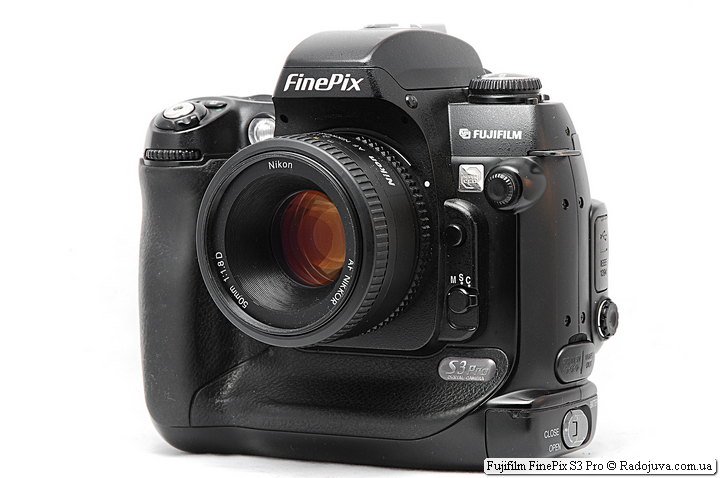
Fujifilm FinePix S3 Pro with lens Nikon 50mm 1: 1.8D AF Nikkor (MKIII)
Results
Nowadays, the Fujifilm FinePix S3 Pro is considered a morally obsolete camera. But many true artists photographers appreciate it to this day because of the unique sensor with a large dynamic range and pleasant color reproduction. This is one of the few cameras with which you can immediately get a wonderful result when shooting in JPEG format, without long dances with a tambourine over the conversion and processing of RAW files. For leisurely creative shooting, especially for portrait shooting - S3 Pro is a real find, especially since it is very cheap. Indeed, newer Fujifilm FinePix S5 Pro in almost every way better than its predecessor.
Comments on this post do not require registration. Anyone can leave a comment. Many different photographic equipment can be found on AliExpress.
Material prepared Arkady Shapoval. Training/Consultations | Youtube | Facebook | Instagram | Twitter | Telegram

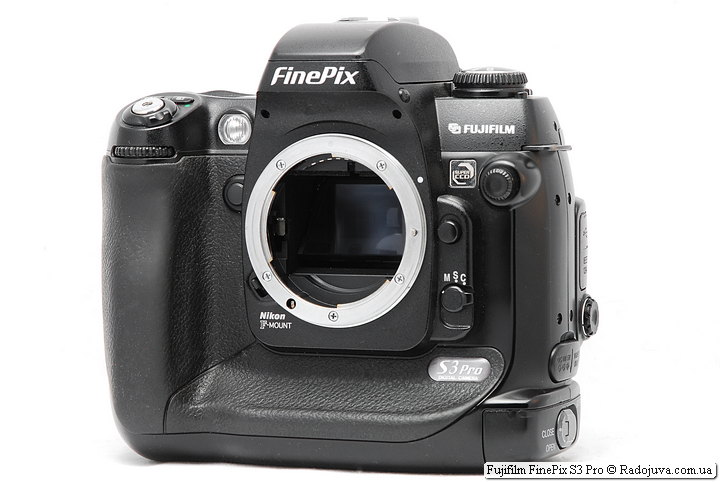
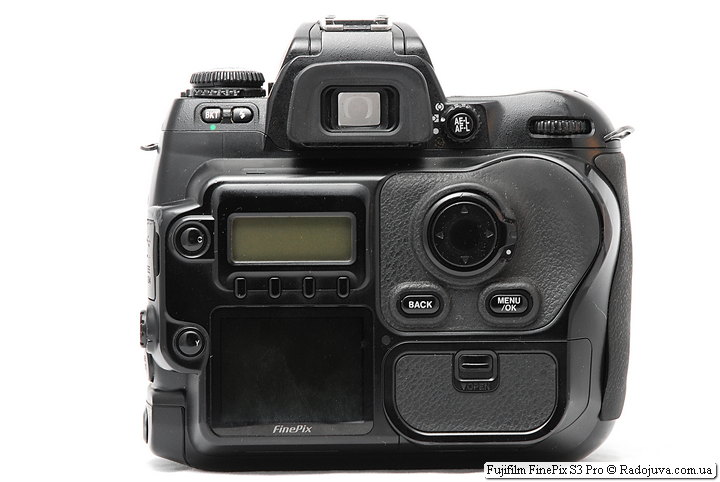
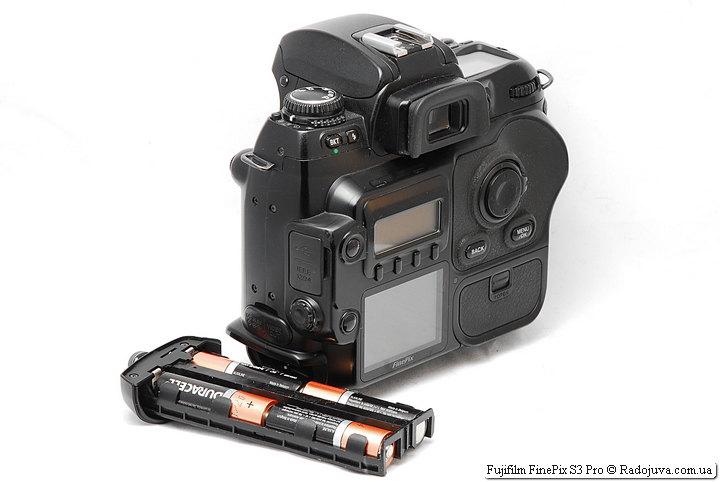
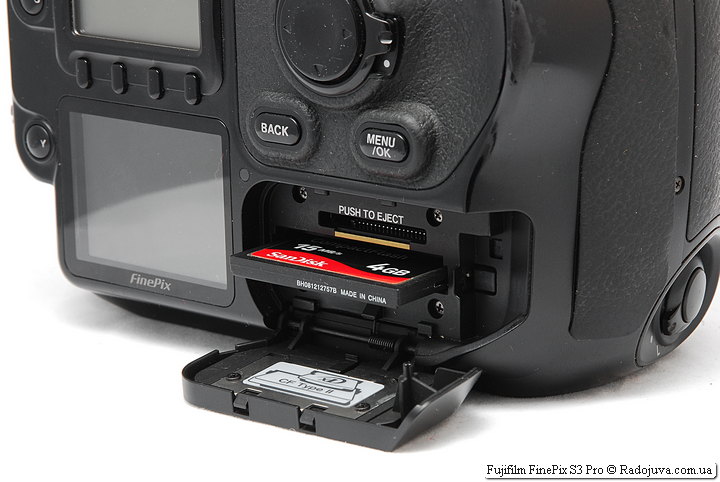





























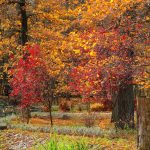

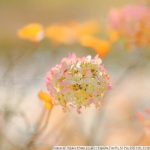




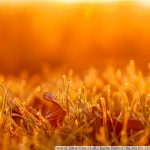


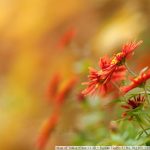

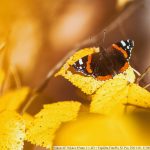


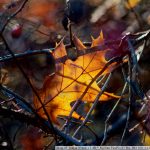
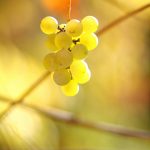













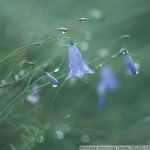




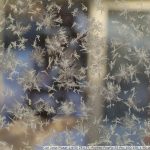





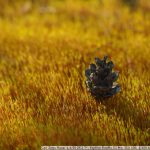




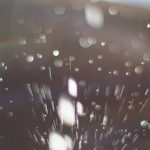
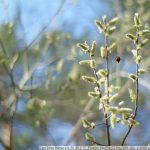
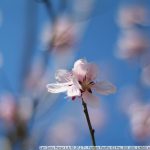




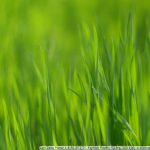




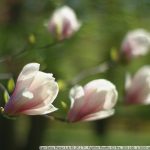
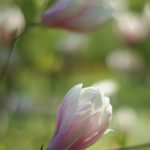
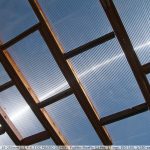
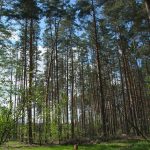


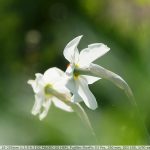








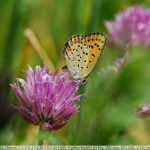

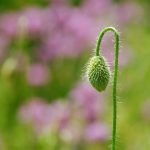





AF-S Nikkor 18-55 VR, 55-200 VR, Sigma 17-50 OS work fine
Thank you very much for the review !!! Just drooling. I never looked in this direction, I ran all over Nikon, starting from the 50th (2005).
Result.
An almost new carcass came from Japan, in its native box, with all the gadgets.
Friends, I don’t feel like jerking in vain in search of glass with which the camera will really not only be friends, but also draw.
What do you suggest for a start?
Thanks for the review, I recently acquired this wonderful gadget, after the canon it is unrealistic to insert it.
I shoot with "Jupiter-37A" through an adapter, I'm thinking about buying 28 - 105.
...
....
.....
Spring is already with you, I envy :) yes, the fujis made very interesting mirror photographic equipment, it's a pity the direction was closed.
this is Gelendzhik.
anyone interested - I shot in a jeep at 6 megapixels in a fully manual (exposure by eye and look at the histogram), all standard and auto, processing - levels and resize in GIMP.
closed because no one wanted to buy at prices 2 times more expensive than Nikon.
Fuji even managed to make FF on a super SSD in the engineering sample.
in theory, everyone likes everything, but no one wanted to overpay :)
With Jupiter 37-A and Nikon D90, shooting by histogram is not bad, not worse ...
And on the Nikon D7000 with an adapter, in aperture priority mode, if you still click on the RGB dimming button in the shop, it disappears altogether. True, you need to twist, but cheap.
A beauty came from Japan! Generally new. Packaged. The fly did not sit. Scratching my turnips. What is the maximum capacity on memory cards? Or is it not important? Instrumentation in Japanese ... ..
it is not clear where the novye comes from.
instruction in Russian:
https://vk.com/doc143293138_437425325
I already dug up the instructions. Only about the size of the map I did not find. Maybe from excitement ...
there are XD and Microdrive cards of different sizes.
I just read about hemorrhoids with cards that reduce the real volume after formatting on the carcass itself. At the same time, they cut specifically, approximately 2 times. I do not want to run into such a mess.
and how much do you need for happiness?
I have 1 photos for 300 gig, I have enough.
Format on the computer, I do not know.
Clear. I think a couple of gigs - for the eyes. Although now, small-volume cards are already a rarity.
The Fujik S3 Pro is suitable for 4 Gb CF cards and Olympus 2 Gb Xd cards. Large-capacity Xd memory cards were not issued, and some CF cards with a capacity of more than 4 Gb can be read incorrectly or formatted incorrectly by the camera. Thus, for the Fuji S3 Pro camera, the guaranteed memory capacity is 6 Gb (4 Gb in the CF slot and at the same time you can put a 2 Gb card in the Xd slot). At the same time, it is impossible to write data to both cards simultaneously, choosing a card through the program menu, but still two memory cards are better than one.
Good luck to everyone, the CF 64gb transend card freely rises to the treshka .. !!!
only it is necessary to be confused 64 to FAT32. By the way, 3ha is my favorite camera, I get rid of the d700, but I’m not in a hurry from treshki (Tormaz). :)))
What do you recommend for glass? There is no desire to go on a thorny path of search and error. One realized that lenses should be fast. But I have them all in full frame, attached to the Nikon D750
I don’t know about lenses, now I am shooting with Jupiter-37A.
I want this one - Nikon AF Nikkor 28-105mm 1: 3.5-4.5D:
https://radojuva.com.ua/2012/11/obzor-nikon-28-105-mm-3-5-4-5-af-d-nikkor
Within five wooden can be taken from Japan.
Everything! I was killed! A few test shots on the Fujifilm FinePix S3 Pro (at the factory) in comparison with the Nikon D750 in parallel and that's it! Everything!!!
but examples ?!
Give me some time. Only now I found a map. 16 gigs. There is no less ... Now, I'll come to my senses, I'll leaf through the menu ...
;))))))))))))))))))))))))))))))
Hello.
It is very interesting to read the comments. But he read it once, twice and bored. When I studied at the courses on photography, then there was no number, and now I remembered the recommendations of the teacher. There was preparation for the final exam. “You will bring these pictures, and you are these, and you - yes, you don’t have any pictures, bring your cameras and lenses (he had expensive equipment at that time, everyone admired him)”
In my opinion, amateur photographers are divided into techies and artists. There is, of course, something in between. Everyone chooses what he likes. In the end: this and that is good, life without hobbies is boring. Each in his field reaches certain heights. Maybe the developers of the camera will take something into service, and the artists will have new ideas.
Photography is an art! Someone can draw a masterpiece with chalk on the wall, and someone with the best brushes will “paint” nonsense.
svs100@yandex.ru
I agree.
here is another example of fuja.
in the same way removes Fuj F30, most of the Olympus.
BB left for "warm".
try to take a couple of test shots in with a gray card and compare with olikov, nikon and kenon.
will be surprised :)
And still, what about file processing. Shoveled a lot of sites and everything is not so clear. It seems that Jeep can be easily processed in any editor. But there are already a lot of opinions about Raw. I installed the native Hyper-Utility utility, but did not understand anything. I did not even find the processing mode. Or it needs to be used only for the conversion of native files. Everywhere they write that it is the native software freak that is able to fully digest all digital information from a file.
But I went to Fuji’s home site and I see that there is a converter for the raw file, but it is tied to the Silkipix program !!! So where is the truth?
Shoot in Jeep and not break your brain with a program for processing or still raw? but what next? What are the steps?
What say you friends?
shoot in a jeep and do not worry.
In short, to demolish all these dear wretched utilities and stomp through Lightrum to Photoshop. Did I understand correctly?
By the way, do you use F1 - F2 modes when shooting in Jeep? Or leave everything in the standard?
I shoot all the cars and the standard at 6 megapixels, it’s recommended to turn off sharpe, because during resize on some frames climb ladders on inclined ones (it depends on the interpolation algorithm of a particular program, I suspect), you yourself see it.
I shoot completely manual on Jupiter-37A with underexposure, processing - levels and resize in GIMP.
try different modes, different programs for processing, choose your path :))
climbs out nothing. neither stairs nor elevators nor fences.
you need to sharpen without options, 6MP is really soapy.
if something comes out during the resize, you need to change the resize program.
here then, to the heap.
..
...
yes, fuck them. all these native utilities that see all the pixels.
lightroom and photoshop - they see only part of the pixels, i.e. work with super SDS as with a conventional SDS matrix)))
Damn, how do I want this camera !!!!
landscape, Jupiter-37A.
I looked at the offers of FujiFilm s3 pro and FujiFilm s5 pro - the difference in price is at least 3 times !!!
I decided to take s3 pro - "play around" ... if you like it - I'll take s5 pro as well ...
It is interesting to find out WHAT lenses can be here to get the maximum quality of images, which ones can reveal the maximum capabilities of this camera (lenses from orbiting military satellites, please do not offer…, already there…). ;)))
Thank you in advance for your advice!
The three and the five are very different.
Any lenses
There are about a hundred different lenses in the collection, you will have to use it ...;)))
Fujas have low requirements for lenses, even rather lenient, so even 44-2geliki can get off
If the requirements are not high, then the pictures will not have either sharpness or detail - a beautiful COLORED vinaigrette ...
By no means
Jupiter-37A.
The colors are super ... !!!
Sharpness ... - ZERO ...: ((((
Well, I'm used to sharp lenses with good detail….
These Fuji are only good for portraits (if the client has skin problems ...). ;)))
I want to try Jupiter 6 and Helios 40. Both of the first white series. The picture is very good in color.
I took a memory card Lexar Professional 1066x 128 Gigabytes. He formatted it on a computer in FAT32 (exFAT was originally installed) and Fujik cracked it with pleasure. Just do not forget to format the memory card only on your computer.
After installing this card, Fujik gives a series of 7 shots and only then goes into thought. With an old memory card it stopped after three. There is a difference!
Thanks to everyone who responded to my words! I did not expect that there will be like-minded people! Thought they would spit on me old. Therefore, I wrote in my hearts and did not look here again. Well, now I want to tell all the happy owners of Fuji. Do not mold on it all 18, etc., except for 18-70! The name of the camera contains the words PRO! And the optics should be in time for her. Let all the plastic go to the plastic And I'm not writing about expensive ones. At aperture 8, all glasses (not all) are approximately the same. You can only talk about drawing on an open “hole”. 24-120,28-105,35-135 Tell me, why do you need 2,8 at a wide angle? Only a wedding to shoot. I once asked my father for permission and my Metz showed the entire cathedral at 8. And I don't want to charm Nikon, the D200 which I have for all other occasions is above all praise. And TROIKA also dampens! Studied, studied, and you open Faz van and ... you don't have to do anything! Just raise the sharpness, and even then not always. After all, who said that the photo should be "cut"? I want to remind all readers that a photographer is translated as painting with light !!! And the apparatus is just an instrument in the hands of an artist or just a craftsman (which I am). Maybe not in the subject, but I'll write! In my opinion, Arkady's reviews about optics or “boxes” do not always coincide with reality. But! Affect the price on sales! You may need to be careful if the site claims to be objective! But I am very grateful to him for reviewing the history of optics. And further! The same lens behaves differently on different cameras and formats. There was such a device "Iskra" 6 * 6 and the lens on it with the central shutter Industar 58 (Karl Zeiss and not Jena, but a real one) was sharp and contrasting. Somehow it happened, I put it in a frame from helios on Kiev 17 and took off the “heads” at school. And lo and behold! On the Kodak film about the photo, sharp and at the same time soft images that do not require retouching were obtained. Acne was not visible at all! But the sharpness was excellent. And at 6 * 6, the contrast of the eye eats away. If you need advice on converting RAF, or a link to a native converter, then write. And remember, the one who goes fishing catches the fish! So shoot, shoot and shoot! And Fuji Troika is your best assistant. And believe it is MORALLY OUTDATE it will not be until there is a better matrix! In the meantime, she is scolded for being slow (with the same resolution Nikon has NEF 11 mb, and RAF 26 mb), poor button layout (tell me at least one owner of the trio, when was the last time you switched the white balance from the machine?), Compared with D3, D700 , D800, etc. Well, let!
I agree completely. Over the past time, I played with my native manual Helios-40, Jupiter-6 and Tair-11. That's just out of interest. Nikon D750 acted as a competitor and lost from time to time in color, light transmission, etc. And the picture is somehow flat, although the colors are bright. But somehow it turned out flat. But Fujik ... I only adjusted the horizon in the editor, framing and sometimes chiaroscuro slightly. Everything. With Nikanor, there was more fuss.
By the way, what kind of puff for Fujik would you recommend?
Shooting clothes in the studio for an online store.
To jpeg and directly to the site - s3.
Canon 6d - misses many colors. raw plus editor. And only if there is an opportunity to compare with the original filming.
A similar result for colors without dancing - d810.
1. Tell me where and how to find out the number of shots taken with a Fujifilm FinePix S3 Pro camera?
2. What is the name of the native program for processing RAW.
3. Are there any correct alternative programs for RAW format photos taken by Fujifilm FinePix S3 Pro?
4. Advise the best in design and sharpness lens for Fujifilm FinePix S3 Pro from the series of auto focus lenses Nikon, Nikkor, Sigma, etc.?
Thanks for answers!
shoot in jpg and don't worry.
I am not “worried”, my apartment is normal with heating.
I'm more interested in the answers to the essence of the questions, rather than an indication of what and how to shoot.
Please answer, who knows the answers to my questions, thanks!
happy for you.
1. nowhere.
2. Hyper-Utility3.
3. full, seek, but you will find.
4. What exactly are you going to shoot? Or do you plot all the stories with one lens?
and again - shoot in JPG.
Thank you for your reply!
I will only shoot portraits.
Studio, with lighting and / or sunny weather on the streets.
I will shoot in 90% JPEG. Especially needed and rav too.
I want only autofocus, a manual, maybe someday.
First of all, outdated, inexpensive lenses are interesting, with a recognized beautiful bokeh, perhaps more modern in the future, when I also buy a full-frame Nikon.
If possible type.
Now 1.xxxx 2.xxxx 3.xxxx for the future 1.xxxx 2.xxxx 3.xxxx Vs' only for portraits, close-up, shoulder and full height.
Thanks in advance for the answers!
An autofocus portrait lens on Nikon with a beautiful bokeh for inexpensive in nature does not exist. Some characteristics of the desired glass will obviously have to be abandoned.
We are not talking about Nikon, but about Fujifilm FinePix S3 Pro. Moreover, not only Nikon makes glasses with such a bayonet mount ..
this site is full of lens reviews - take your pick.
A lot has already been written about this camera. I accidentally bought a three-ruble note and was stunned. And do not care how many pixels there are 6 or 12. I bought an old one. Then he got dirty, he sold it. I bought a Nikon iron that works with all the glasses, a Maxim machine gun, not a camera. In the hand does not lie, all the bells and whistles to fuck, no picture! I bought a batlock, it doesn’t lie in my hand, there is no picture! If the shadow is in the frame, then the ass will not stretch out in the shop! And annoying when people did not hold in their hands and write nasty things. I sold that piece of iron and took almost a new (found) Fujik. But! I do not know the firmware 2,18, it sees all the cards without problems (my old man did not see more than 2 gig) I'm probably an old grumbler. But it seems to me that the latest versions have become worse. I'm writing about the top three. He held the five in his hands. Why they stuck a thick filter there is incomprehensible. Otherwise there would be a camera of all times and peoples with an uncomfortable grip. In short, Chris Kelby wrote that there was no point in filming as a rabbi, he probably had a fujik. Still. The device is old, pro !!! Pros for people who take photos !!! And do not click the machine gun! Therefore, in my opinion, optics should be with the letter D! With new plastics, he tears the picture. And I also think that Arkady is either biased or just loves the contrast. I'm just wondering what criteria comes from. I read reviews about optics and wonder. Maybe he comes across such instances. But on my hand! After his negative review, you can buy cool glass inexpensively. I will say simply- soft negativity and contrasting development of paper. Whoever hears will understand. Still! If the RAF then the native utility without interference and save 16 bits in typhac. It turns out a file of 70 meters, and like a fox Alice do it with him! It reaches 3-4 steps! Arkady writes here that the camera has 14 bits? Is that sho? 5100 chi sho? Look at the documentation - 16 bits per channel and that's it! Another glass praises 24-85 plastic and hait 24-85 2.8-4 Well, why? Everyone needs money. At the price of all the lop-eared? It is necessary to open the shop noodle products
raw is 14 bits, but the fact that it then fits into 16 bits does not change anything. if you want, I will write in 24 bits and it will be 72 bits per pixel, only data will not work :). Your experience is your experience. I have my own experience. 24-85 with a stub is a nice balanced lens. The first versions 24-85 on 24 and 2.8 are none at all. Where is wrong - indicate. If c3 pro is for the pros in 2017, go to any more or less serious event and be surprised :)
Thick filter to get rid of moiré in S3 Pro. One was fixed, another was spoiled ...
I do not like autofocus ... We cling to the on-camera monitor. Without paddock 4tyr.
With food, too, is solved. On Ali, we buy a battery pack under the puff + soldering iron + arms from the shoulders. The issue is resolved, which is done.
Another question is that Nikanor 810 came ...
I look at Fuj and think whether he is needed now?
Good day to all. Today I received a dead-end S3 Pro by mail, but when I try to write a picture to a CF card, I get Err. I have already changed two cards - the result is the same. Maybe in addition to CF you need to plug in xd?
I inserted a new set of salt batteries, but after a couple of frames the camera begins to swear at a low charge. Now I'm going for a new set of batteries and unsubscribe later.
If necessary, I can shoot a video.
I hope for the help of local owners of this device, because nowhere else to go)
False alarm. It was a rotten FLARX battery. As soon as the budget TROPHIES were put in, everything went crazy.
Another happy owner Fujik became more))
Now the question is to the point.
When shooting RAW with maximum quality (dynamic range - Wide 2), the output is a file equal to 25 mb, but when it is saved in dng (lossless compression) through the same ACR, the size is reduced to 12-13 mb.
What is sacrificed in this distillation?
If you set 100% in the DD settings (I don’t know how exactly this is called in S3 Pro), then RAW, in theory, will be 12-13 MB. Check if this is the case, then DD is sacrificed, most likely
ACR and other RAF file converters, does not take into account and “throws away” the data of “R” pixels (which are small). As a result, the picture resolution is 6MP and DD is standard, like everyone else, and not 230% and even less 400% ... I know, only the native converter correctly takes into account the data "S" and "R" pixels.
"ACR and other RAF file converters ignore and" discard "the" R "pixel data (which is small)."
But this is a curious info.
And how does the native converter work in modern Windows 8.1 x64 and 10 x64?
And where to download it?
mimokrokodilu - "And where to download it?"
The only version is at Arkady’s home computer, to get it you need to transfer $ 5 to his account. After which you get a download link.
What nonsense have I just read? There are links in the c5 pro review, for example, http://rutracker.org/forum/viewtopic.php?t=674094 on hyperutility, it works with all cameras up to and including c5 pro and is installed on modern x64 windows
Not nonsense, just sarcasm. Attentive readers have long found where you can get HyperUtility.
PS Also donated five dollars donat)))
Lr takes into account both types of pixels, at the output it gives 12 MP and allows you to pull the picture better than native hyperutility.
Doesn't ACR and LR work on the same engine?
either shoot in a jeep or HU-3, no need to experiment.
It's bad that it's impossible to edit your messages. I found inaccuracies and errors, but change ...
Honestly, I have long been comparing a hyper-utility, phase 1, lightroom and a couple of different converters, showing a RAV file in the listed programs. I made a choice for myself. Everything except my native one cut off information in the light. Maybe now something has changed But I doubt. Cameras are not manufactured and are not sold for a long time, the users of these devices are less and less, because of the failure of these and the weather as a whole they do not. Why do software manufacturers bother with algorithms that take into account the topology of the structure of the SR matrix (large with small to size and cellular pixel arrangement)?
It's about permission. Google translation.
Since you can see that the Fujifilm RAW conversion engine does not provide more (or less) resolution than the camera itself, although, to be honest, I think this is more an indication of how good the JPEG conversion in the camera is than anything else. Interestingly, ACR 4.1 does not seem to be able to pull any of the resolution benefits offered by Super CCD from files, creating a result that just looks like a 6 megapixel file, up to 12MP. ACR also produced a fairly strong moire on all diagonals. I also pinned the crop from the S5 Pro output to 6MP to show that there is a tiny resolution for shooting at full resolution. (Original source is https: //www.dpreview.com/reviews/fujifilms5pro/16)
I think that ACR and other converters do the same with dynamic range, they just throw out the "R" pixel data.
Although with difficulty, I admit that in the newest versions of ACR, they began not only to “stretch” 6MP-“S” pixels to 12MP, but also take into account the contribution of 6MP-“R” pixels. Both when converting the resolution and during DD.
Although, if a person is satisfied with the results of a particular program, the more the fruits of his work are liked by others, then what difference does it make where, how and how he converted the original RAF.
In all this, the key word is “ACR 4.1”, it came out 10 years ago, 10 years, Karl !!!
Alexey, in the post above, asked the question:… it was 25MB, now it is 12-13MB!
In short: there was a fruit, there was a dried fruit !!! Half of the information was shared somewhere ...
I repeat, I admit that in 10 years something has changed for the better. But I doubt it very much !!! they threw away with what they can’t work, but the things that remain are familiar, they know how to work well. Here, according to Arkady, the light is pulled better than in the native program.
Sergey, I read Alexey's question and also answered him :), but the essence of the question is: “… but when saving it to dng…”. Those. information is lost when converting from native Fuja RAW format to Adobe RAW format - so it is absolutely clear and predictable that it will be lost. Arkady wrote correctly, sharing his experience that modern Lightroom and ACR work correctly with Fuj's files (I myself also compared and saw the difference only in the slowness of Hyper-Utility).
This is not entirely true, the sizes are different due to the different file structure. Converters work with all the source data, after saving, of course, something may disappear. Dng in its specification uses lossless compression, hence the smaller file size. And if you dig even deeper, it turns out that dng is not at all as good as raw.
At least I noted that I had been comparing directly for a long time. You are right, I did not quite understand the essence of the question, I sincerely apologize ...
Good time, Arkady!
Please specify which Lr is better than the native HU-3 if we are talking about RAF image processing?
For example, colleagues write that Lightroom from the 4th has changed a lot for the better according to color algorithms, but after all, this does not mean at all for the better for
Fuji S3 Pro & RAF Files
Fuji S5 Pro right?
I have an old one now Lr'2
It turns out that it’s better for Pentax to save in his RAVA than in DNG?
Yes, you can try to pull the shadows of both, write the conclusion.
Today on the first day I went out to shoot. The picture is livelier than all the living. The usual CCD, of which I have several pieces, is resting)